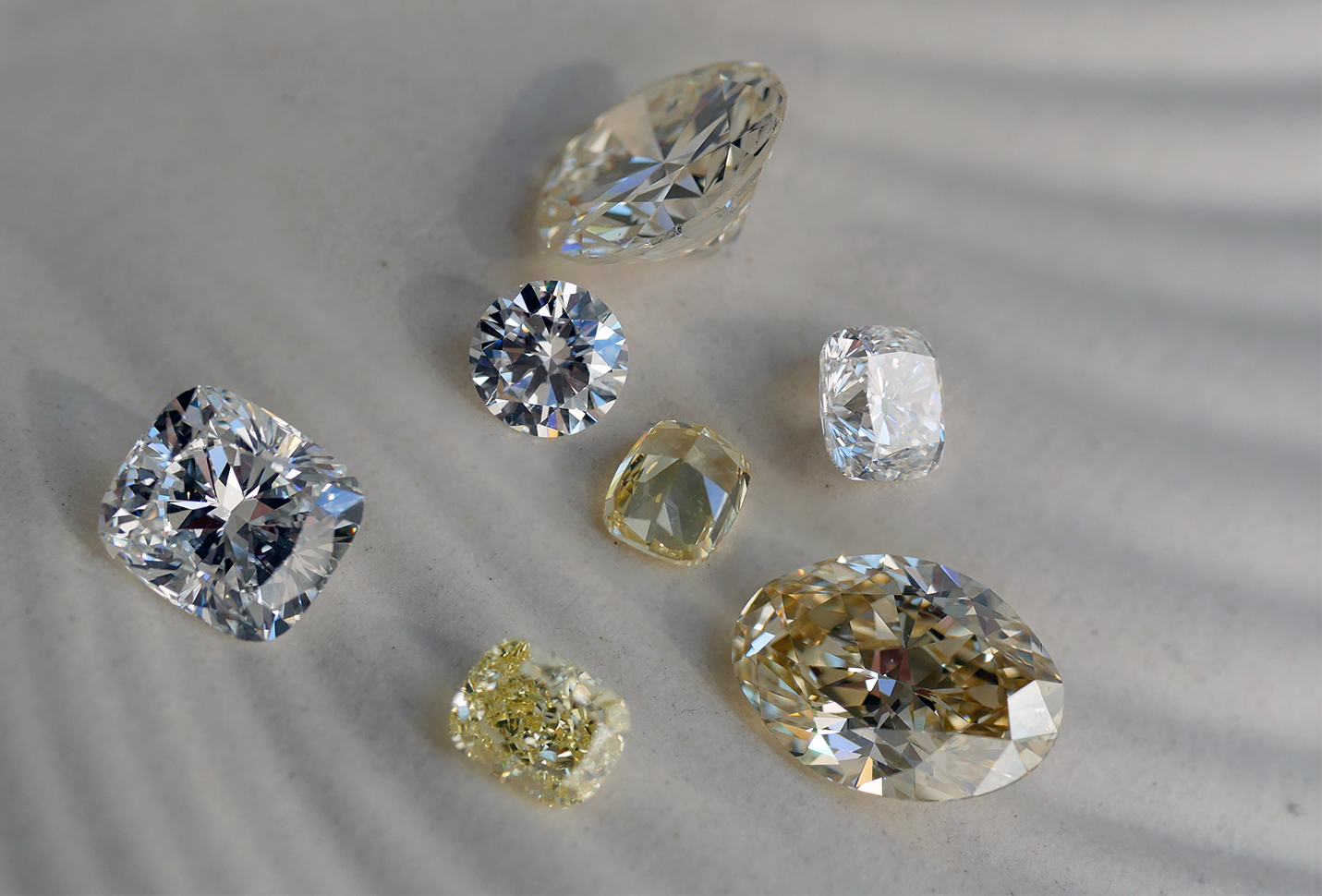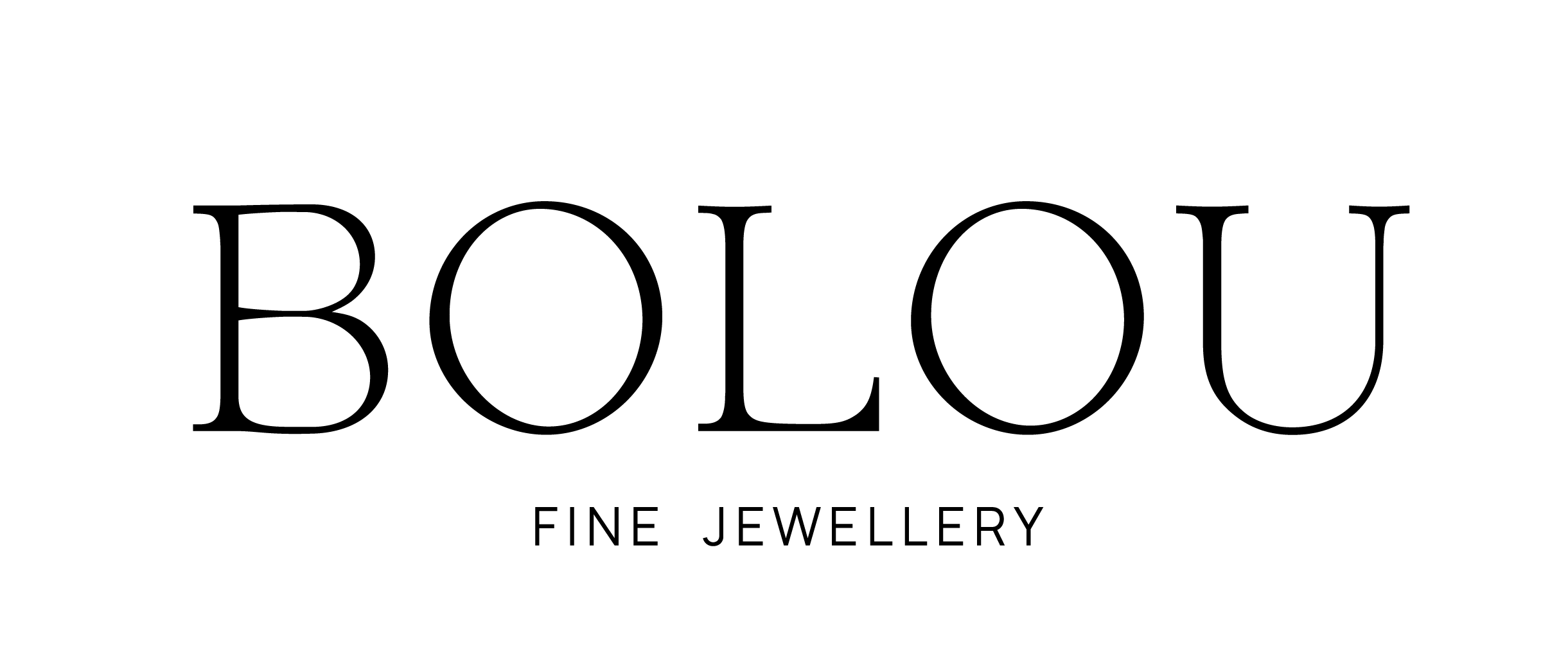Article: What you should know about diamonds

What you should know about diamonds
There is no doubt that diamonds are one of the most well-known and sought-after gemstones. These exquisite gems have fascinated people for centuries with their unique properties and stories that stretch far back in time.
Diamonds are more than just jewelry. They are symbolic, romantic and the epitome of exclusivity. If you share our fascination with diamonds and want to delve deeper, read on as we guide you through everything you need to know about these brilliant gems. You can of course also read our guide to colored gemstones .

What are diamonds made of?
Diamonds are formed when carbon is compressed over millions of years under extremely high pressure and at high temperatures. This formation takes place deep in the earth, typically at a depth of 150-200 kilometers, where there is a lack of oxygen. After formation, diamonds are transported up to the Earth's crust through crater tubes. Diamonds are precious stones that form naturally.
Diamonds are known as the world's hardest mineral and are rarely scratched. In reality, it requires the use of other diamonds or more precisely diamond dust to cut a diamond. It is precisely this material that is used for grinding diamonds. If you are interested in knowing more, you can read everything about gold and carats in our blog post.
Appraisal of diamonds
Assessing the quality of diamonds is a complex process that requires expertise and thorough analysis. A certified diamond appraisal is usually carried out by an independent and recognized gemologist. This expert uses specialized equipment and an extensive knowledge of diamonds to determine the quality and value of a diamond. This assessment takes into account several determining factors, often referred to as "the four Cs": carat weight, color, clarity and cut. These four elements form the basis for judging and assessing the diamond's quality and value. The result is a comprehensive appraisal report that gives buyers and sellers a reliable basis for their decisions.
Determine the quality of the diamond using the four Cs
The quality and value of diamonds is determined using the four C's. When quality stamps diamonds, you look at Carat (weight), Color (colour), Clarity (clarity) and Cut (grinding).
At BOLOU, you meet GIA (Gemological Institute of America) certified specialists, which is a seal of quality for the advice you receive. In addition, we work exclusively with recognized diamond suppliers and always purchased in accordance with international conventions.
Carat - The weight of the diamond
Carat is a unit of weight for diamonds and 1 carat corresponds to 0.20 grams. The origin of the unit of weight dates from the time when you only had scales to determine the weight of objects. This means that 1 carat weighs the same as 1 kernel from the fruit of a locust tree.
The price of a diamond increases in line with its weight, but this increase is not linear. This is because large diamond crystals are far more rare than small crystals, which is reflected in the price.
Clarity - The clarity of the diamond
Clarity is used to determine the purity of the diamond. High value diamonds are typically characterized by exceptional clarity, where their composition is free of impurities, resulting in a brilliant flow of light. Impurities can also limit the possibilities for grinding.
Diamond clarity is calculated on a scale with 12 steps — from flawless to included. At BOLOU, we generally use a minimum of VS1 quality.

Color - Color of the diamond
The color of the diamond also helps determine how valuable it is.
Although diamonds are typically associated with being transparent, the vast majority of diamonds are actually slightly brownish or yellowish. Clear diamonds are the most valuable, but are also seen in many special colors, known as Fancy Diamonds.
The assessment of a diamond's color is of great importance, and therefore a grading system is naturally used to assess the color of diamonds. In both the European and American context, we use a numerical system for this purpose.
The graphic below shows an overall overview of the system. “DE” is the most valuable color, while “MZ” are the less valuable.
Naturally blue diamonds are the rarest and only 0.01% of the world's diamonds should be blue. The bluish color is due to the presence of boron, and they occur in earth layers four times as far down as ordinary diamonds.
Natural red diamonds are also rare, and only 20-30 pieces are said to exist in the entire world. That is why they are also the most expensive. A 1.56 carat red diamond with the name Argyle Phoenix, for example, was sold at auction for over 2 million dollars.

Naturally blue diamonds are the rarest and only 0.01% of the world's diamonds should be blue. The bluish color is due to the presence of boron, and they occur in earth layers four times as far down as ordinary diamonds.
Natural red diamonds are also rare, and only 20-30 pieces are said to exist in the entire world. That is why they are also the most expensive. A 1.56 carat red diamond nicknamed the Argyle Phoenix, for example, was sold at auction for over 2 million dollars.
Cut - How diamonds are cut
The cut of a diamond is absolutely central to its appearance. Even a diamond with high clarity and nice color will appear dull if the cut is done poorly. A professional cut brings out the best in an elegant diamond.
For decades, BOLOU has specialized in the classic brilliant cut, which is a well-known grinding technique. Our state-of-the-art tools and professional jewelers are able to design and manufacture any imaginable piece of diamond jewelry that, through uncompromising quality and unique design language, is sure to stand out from the crowd. Contact us to find out more about the possibilities.
What is the difference between brilliants and diamonds?
The difference between brilliants and diamonds lies in their terminology and application. Brilliant is a term used specifically to describe a diamond cut in a particular brilliant cutting technique. The brilliant cut is known to enhance the diamond's light reflection and create an impressive shine. On the other hand, diamonds are a broader category that includes gemstones that are formed from carbon and can have different cuts and characteristics in addition to brilliants.
How much do diamonds cost?
The price of diamonds varies considerably and depends on several factors, including the 4 C's - carat weight, color, clarity and cut. These factors help determine the quality of the diamond and thus its price.
When considering buying a diamond, we recommend securing a GIA certificate as a minimum, as a stamp of quality, especially if the diamond is larger than 0.30 carats. The GIA certificate is a guarantee that the diamond is of the specified quality and will help you make an informed decision about your purchase.
The price of diamonds can also be affected by other factors, such as the shape of the diamond, the quality of the cut and any special characteristics such as color or rarity. Furthermore, market supply and demand can also affect the price of the diamond.
It is important to remember that the price of a diamond is not just a matter of size or carat weight. Although larger diamonds generally command a higher price, a smaller diamond with unique color, clarity and cut can be just as valuable or even more desirable.
Regardless of what you want to buy, it's crucial to work with a trusted diamond dealer and consult with experts to get a fair price estimate and find the right diamond for your needs and desires.

Diamonds are often used in engagement rings. You can find everything you should know about engagement rings - or read our blog post about special and unique engagement and wedding rings here.

